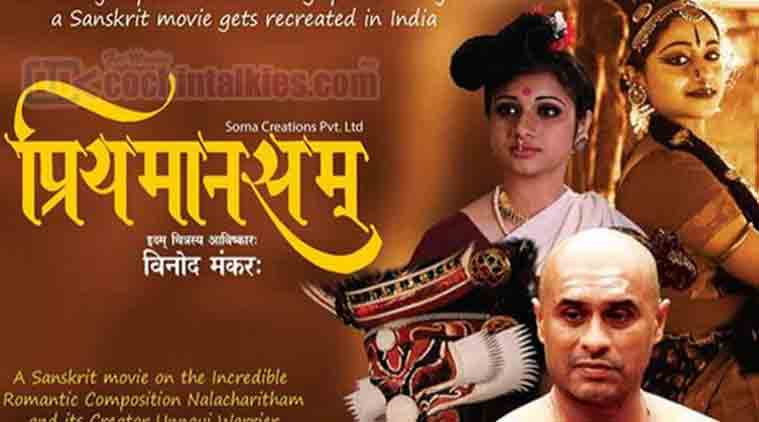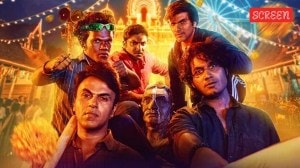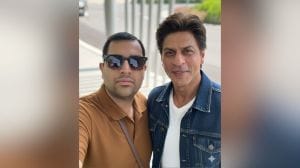Click here to follow Screen Digital on YouTube and stay updated with the latest from the world of cinema.
Third Sanskrit film in IFFI: Movie on life of Malayalam scholar-poet Unnayi Varrier
The film, which has Rajesh Hebbar and Kuchipudi dancer Prateeksha Kashibeen in the lead, has been shot in Vellinezhi, a remote villege of Palakkad in Kerala that has produced many Kathakali artistes.
 Directed by Vinod Mankara, ‘Priyamanasam’, the only third movie to be made in Sanskrit, is about the 17th century poet-scholar Unnayi Warrier.
Directed by Vinod Mankara, ‘Priyamanasam’, the only third movie to be made in Sanskrit, is about the 17th century poet-scholar Unnayi Warrier.Priyamanasam, the third Sanskrit feature film to be made in India, has been selected to open the Indian Panorama of the International Film Festival of India (IFFI) in Goa this month.
Talking about the film, writer-director Vinod Mankara said ever since he watched actor-director G V Iyer’s National Award-winning films — Adi Shankaracharya (1983) and Bhagavad Gita (1993) —he had been fascinated with the idea of making a film in Sanskrit.
The inspiration to realise his “childhood dream” came from his love and familiarity with Kathakali, a classical form of dance drama from Kerala that celebrates the beauty of Sanskrit verses.
Based on the life of 17th century Malayalam poet-scholar Unnayi Varrier, the one-and-a-half-hour-long film revolves around the agonies and the creative process that Varrier went through when he wrote his “incredibly romantic” Kathakali play, titled Nalacharitham.
[related-post]
In 2008, Mankara made a documentary on Varrier – Nalacharitham Anchaam Divasam and received the Kerala Kalamandalam Award for it. According to him, Priyamanasam is an extension of that documentary. “I noticed that there are 11 monologues in it. These segments reflect the image of the poet. It is then that I thought of exploring the life of Varrier through these monologues,” says Mankara, who has made nearly 600 documentary films.
He rues the fact that even though the poet’s work is still very popular among the Kathakali dancers, there is no memorial for him in the state.
Being familiar with Sanskrit, especially the works of Kalidasa, the journalist-turned-filmmaker chose to write the film’s story and script himself. Later on, he consulted a host of experts on the language to keep it error-free. Calling Sanskrit a “musical language”, the director said he chose to keep the text simple. It was a conscious decision as he believes that both Adi Shankaracharya and Bhagavad Gita employed a more elite Sanskrit.
The lucid dialogues and the profuse use of Kathakali dance sequences – which are “very colourful and musical” – will keep the viewers engaged, he believes. During the film’s shooting, the set resembled a study room with every artiste practising his lines with the help of laguage experts.
“It was a wonderful experience with the whole team working in Sanskrit. In the end, all the actors were speaking the language fluently,” he recalls.
Well aware that the film will not be a box-office success, Mankara said he was keen on narrating this story on the big screen “both for the sake of the language and the great Malayalam poet”.
The film found a producer in businessman Baby Mathew Somatheeram. “Hardly any document is available on Varrier today. I spent five years in researching on him,” he says. Mankara wrapped up the film’s production recently and does not have a release date in mind yet. However, he wants to take the film to some international festivals first since many of them don’t entertain released movies.
The film, which has Rajesh Hebbar and Kuchipudi dancer Prateeksha Kashibeen in the lead, has been shot in Vellinezhi, a remote villege of Palakkad in Kerala that has produced many Kathakali artistes.


Photos




- 01
- 02
- 03
- 04
- 05


























